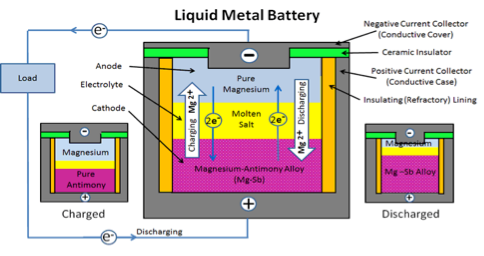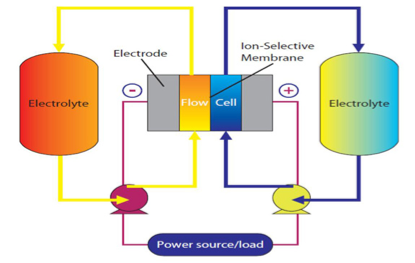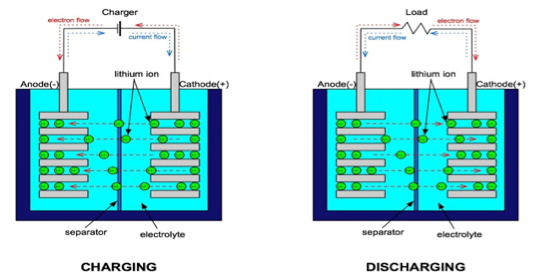Memos to Mark: Battery Storage and Why it is the Next Big Thing
The following is the first in a series of real legislative policy memos written for Congressman Mark Takano by his staff. The series will give you an inside glimpse of what comes across the Congressman’s desk on a daily basis.
To: Congressman Mark Takano
From: Staff
Re: Battery Storage and Why it is the Next Big Thing
Date: 7/14/2015 (Editor’s Note: This is when the memo was originally given to Representative Takano)
Introduction
As the unit cost of wind and solar power drops closer to that of fossil fuels, the issue with these types of power becomes how to accommodate for irregular demand and supply, since the wind does not always blow, nor does the sun always shine. According to a graph from the Economist, even during the day, and even in the desert (Arizona), the sunlight can vary from minute to minute.

However, if you could store the energy created by wind and solar power throughout the day, it would eliminate the problem of reliability gaps that occur with renewable energy. One way to store this energy is with batteries.
Why Batteries?
First, new batteries could be used to replace gas powered “peaker” stations, which are very expensive to run and are used to smooth the energy grid during irregular demand. However, the ultimate goal is for these batteries to not only smooth the energy grid, but also to be able to store enough power to overcome the irregularities that exist with renewables. According to the Economist, cheap grid scale storage means that renewables could compete with fossil fuels on cost alone. Using these types of batteries could mean billions in savings for the grid as well.
What are the different Types of Batteries?
There are multiple types of grid scale battery technologies available including:

Liquid Metal: Battery made of two types of liquid metal (dense metal and light metal) separated by a moderately dense liquid electrolyte. The three substances float in separate layers. A Professor at MIT developed this battery and the prototypes will be connected to the grid this year in Hawaii, New York, and Alaska, with commercial versions launching in 2016.

Flow: Energy is stored in two electrolytes that are separated by a membrane. They are recharged by two chemical components dissolved in liquids. It is similar to a fuel cell. This prevents the electrodes from wearing out and there is no upper limit on how much energy this battery can store since capacity depends on the size of tanks used. They are not widely used because the chemical used, Vanadium, is very expensive. Scientists at Harvard University’s School of Engineering and Applied Sciences are developing and recently published a study on a flow battery that uses quinones, which are organic molecules akin to those that plants and animals use to store energy and is significantly cheaper.

Lithium-ion: According to the Department of Energy’s Storage database, which has up to date information about all types of storage projects from around the world, there are currently 111 lithium-ion battery storage projects in California alone. The lithium-ion battery is a rechargeable battery in which lithium ions move from negative electrodes to positive electrodes. They are used to power cars (Tesla) to cell phones. Of the 10 largest battery storage projects around the world, 6 are using lithium-ion batteries. These batteries are the most popular for new battery storage systems because they are the types of batteries used in electric vehicles are in that sense, industry tested.
Other types of batteries are Sodium-Ion, Lead- Acid, Sodium-sulfur, Ni-Cd and are similar to lithium-ion batteries. While these battery types have nominal differences, they all chemically store energy within their electrodes.
Challenges for Expanding the Battery Storage Market
1. Lack of Regulatory Mandates: Public and private investments have sped up the development of battery storage, but regulatory mandates help to push the market.
2. Technology Choice: The battery storage field is currently full of competing options each with their own pros and cons. Choices will need to be made about what type of battery is best, especially to scale up for grid storage.
3. Lack of Factories: A lot of battery startups are focusing on creating and building their product themselves, but eventually, to scale up, they will have to invest in the factories to mass market them. Prices won’t drop until this happens.
4. Bank Backing: The battery storage industry is still very new, which means that banks are hesitant to invest. Currently a lot of startups are getting funds from smaller investors, but without banks, they won’t have the large capital they need to grow the energy market. Right now there is a lack of proof that batteries have the capability to perform as well as promised.
Policy Suggestions
1. Battery Storage Innovation Act Proposal: The Battery Storage Innovation Act would amend Section 1703 of the Energy Policy Act to include battery storage technology for residential, industrial, or transportation applications under the loan guarantee program. This bill would not provide additional funding for the program. (Editors Note: This proposed legislation has since become H.R. 3263, The Battery Storage Innovation Act which was introduced on 7/28/15)
2. Start a Battery Storage Caucus: The Battery Storage Caucus would serve as a tool to introduce and educate Members of Congress about battery storage technology and policy implications for the industry.
3. Support the STORAGE Act: The STORAGE Act supports different types of energy storage, including battery storage, by providing a 30% energy tax credit for projects that are directly connected to the electrical grid. Introduced last Congress by Representative Gibson, this bill has not been introduced yet in the 114th Congress. Since Representative Gibson is retiring, you may want to reintroduce it in the 115th Congress.
4. Continued and Increased Support for ARPA-E: The Advanced Research Projects Agency-Energy program was originally created by the America COMPETES Act of 2007, with the purpose of funding the development and research of high-risk energy technology.
5. Federal Tax Credits: One of the single best policies that helped push solar technology innovation and into households across the country was the Solar Investment Tax Credit. A similar version could be used to help accelerate the battery storage industry for home and grid scale storage. Other countries already subsidize this industry, recognizing battery storage potential.
Source: Medium
